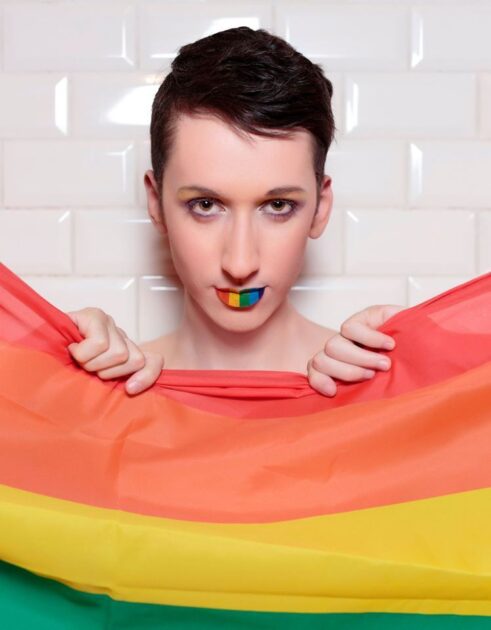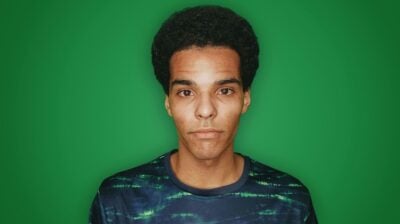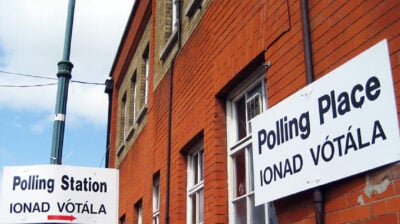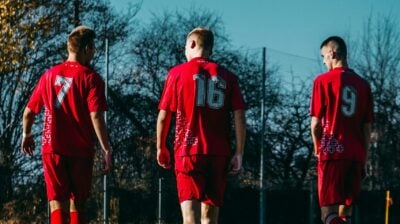Man, I feel like a Wo(man)
Men should be allowed to express their gender identity as much as women.
Written by Eleanor Walsh
Voices - Opinion
Young people share their point of view.

Ireland, in recent months, seems to have been transformed into a loving, liberal and open country in the lead up to the Same Sex Marriage referendum in May. Irish society, its public and private institutions and its media have taken huge strides in being open and taking a stand against homophobia. When it comes to anything around the issue of gender, transgender and gender expression, etc. we are still lacking, however.
The first time I became aware of Ivan Fahy was when an article about the “stir” he had caused by graduating from NUIG in high heel’s appeared in my Facebook newsfeed. My initial reaction was one of anger, though not for the reasons you might expect. I was angry because someone dressing however they felt comfortable and confident was newsworthy in Ireland. I was angry because I instantly thought of the negative feedback this kind of story could generate and direct at Ivan. I was becoming more and more exhausted by older generations assertions of what it was to be a “normal” man and a “normal” woman.
Before opening the article I knew that I fully supported Ivan and his outlook. I knew I shared a similar outlook on gender fluidity. I had always wished society could be more open-minded when it came to stepping outside of the gender norms and being fluid with our gender identities. As I scrolled though the article, my brain agreed with the words I was reading about Ivan, his graduation and the positive attention he received. I was upset with myself when my eyes did a double take on seeing my first picture of Ivan, however.
Even though my brain had registered a deep support for Ivan and his viewpoint, my eyes did not reconcile this with the image I saw. I began questioning myself as to whether or not I really was as liberal and open-minded as I believed I was. The images of Ivan dressed in high heels, make-up and looking more stunning than I ever could, did not disgust me. They did not fill me with hate, fear or any other negative feeling. I was not offended by them so why had I such a strong reaction when I first laid eyes on him?
I realised it was because I, like many others, had been somewhat conditioned to view a male, dressed in what is considered a female way, as abnormal. It’s true, in the past 15-20 years the portrayals of women in Irish media, publications, industries has seemed to develop past stereotypically “feminine” but it can be said that men and their gender portrayals seem to be as rigid as ever.
Images of females dressed masculinely are splashed across publications, television screens and the Internet. Female “masculinity” has inspired fashion trends around the world, redefined “female” hair styling and so why isn’t a similar exploration of different male identities being undertaken? Why are the so few images of males dressed and portrayed femininely? Or even androgynously?
Being a woman, I can dress and express myself in a masculine manner publicly and have done so. So why do I get the feeling my male counterparts are not afforded the same opportunity?
When it comes to men, Ireland has long upheld old traditional representations of masculinity and notions of “manhood”. Examples can be seen everywhere: men are not entitled to paid paternity leave on the birth of their child, unmarried men are not legal guardians of their children and gay men cannot donate blood. You might be saying what do these injustices have to do with how men are represented in Ireland’s society. Well each injustice exists because of the conservative notion of “real” men being peripheral parents, providers of income and lovers of women only.
This image is enshrined in the laws that govern our “friendly” country so it’s hardly surprising that it has become enshrined in the psyche of the people of this country. This image is also a staple in advertising, social media, national television programming and every communication outlet you can think of. Irish companies continue to use stereotypical portrayals of men in their advertising, Irish broadcasters continue to create and support stereotypical male characters on television and anything that deviates from these portrayals causes a sensational furore.
Ivan’s outlook and androgynous modelling career may be new in the public sphere of the Irish psyche but are vital if we are to relax our views on what male gender norms are. Many men, just like women, struggle with the rigid gender constructions placed on them. In the past few years, steps have been taken to confront problems faced by males in Ireland, such as campaigns to end stigma around male depression and mental health problems. It’s important that while we loosen the restraints on mental health expectations of men, we should also begin loosening the restraints on how men choose to express their identity physically.
It took the simple image of a confident young man in heels to strike up this conversation in my own mind. It made me realise that women are the not the only victims of rigid gender roles. Men too are restricted from expressing themselves as anything other than “strong, macho and silent”. This prescription of gender norms in our society leads to hatred and inequality and it needs to stop now.
I will no longer double take on seeing a man who wears heels, wears pink or wears make-up. It’s about time more diverse representations of men appeared on Irish screens and across Irish publications. It’s about time men can define their own masculinity and dress in a way they want to, without fear of disgust and hatred. In order for this to happen we need to remember; people are more than their gender.






